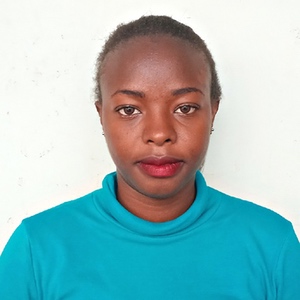It was a Wednesday afternoon when I visited the school. There, I found two teachers waiting at the administration block office who welcomed me warmly. I introduced myself and then the headteacher gave me a chance to move about the school and collect information about the need.
The school is in a rural and peaceful place. The buildings are made of bricks and have iron sheets for roofs, with 16 total classrooms and an office building. There are 600 students here who study English, Kiswahili, mathematics, religion, science, social studies, hygiene and nutrition, and physical education. There is also a small playing field where children play football and kora. Kora is a traditional game using small stones; the children throw one up in the air and must fetch another one from the ground before they catch the first stone.
The main water source is an open dug well on school grounds. It has a hatch that's opened so a bucket can be lowered on a rope. The entire process of fetching water is dangerous for these students because the opening is large enough for them to fall inside. And the water isn't even safe for drinking since the well isn't properly protected from contamination. Though the water that comes out is sometimes brown, students still drink it when they're thirsty.
This dug well is also prone to drying up when it doesn't rain for several days. When students lower the bucket and can't find water, they must walk to a neighboring boys' high school and wait in line to use water from their borehole.
There isn't any water storage back at Kimangeti Primary School so students leave water sitting out in the same containers they used to fetch it.
Students are getting sick from their contaminated well and miss school to find treatment. "The pupils get a rough time to go fetch water at the hand-dug well and at the borehole at Kimangeti Boys'. They then come back to class to read and they do not concentrate well in class leading to poor performance in school," said Teacher Kamwani.
What we can do:
"The school is in need of sanitation facilities and we have a shortage of latrines. The school enrolls many pupils now and they waste a lot of time queueing to access the toilets. Also there is no water storage facility within the school compound. We shall really appreciate if you consider us!" said Teacher Opati.
VIP Latrines
We will construct two triple-door latrines with local materials that the school will help gather. Three doors will serve the girls while the other three serve the boys. And with a new source of water on school grounds, students and staff should have enough to keep these new latrines clean.
Rainwater Catchment Tank
A 50,000-liter rainwater catchment tank will help alleviate the water crisis at this school. The school will also help gather the needed materials such as sand, rocks, and water for mixing cement. Once finished, this tank can begin catching rainfall that will be used by the school’s students and staff. Students will no longer spend their time on the arduous task of lifting a heavy container out of the open well, nor will they have to walk to use water from the neighboring school's well. They will have both a source of water and a place to store and treat it.
We and the school strongly believe that with this assistance, standards will significantly improve. These higher standards will translate to better academic performance!
Training
We will hold training on good hygiene habits for two days. The facilitator will use PHAST (participatory hygiene and sanitation transformation), ABCD (asset-based community development), CTC (child to child), lectures, group discussions, and handouts to teach health topics and ways to promote good practices within the school. The CTC method will prepare students to lead other students into healthy habits, as well as kickstart a CTC club for the school.
Handwashing Stations
This CTC club will oversee the new facilities, such as handwashing stations, and make sure they are kept clean and in working condition. The two handwashing stations will be delivered to the school, and the club will fill them with water on a daily basis and make sure there is always a cleaning agent such as soap or ash.

 Rainwater Catchment
Rainwater Catchment
 Rehabilitation Project
Rehabilitation Project































